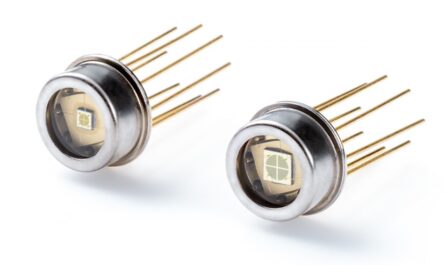Non-destructive testing (NDT) refers to a wide group of analysis techniques used in science and industry to evaluate the properties of a material, component or system without causing damage. Commonly applied to industrial quality control, NDT helps verify properties such as defects in welds, materials, or assemblies that could be safety risks if left undetected. By avoiding damage to the product or structure being inspected, NDT allows for quality assurance testing without compromising the integrity of the item being tested.
Visual Testing
One of the simplest but most widely applied Non-Destructive Testing methods is visual testing. Also known as visual inspection, it involves using the human eye or optical magnification devices to methodically examine surfaces or materials for defects, anomalies, or foreign objects. Visual testing is often an important preliminary step for other NDT methods, and it remains effective for detecting larger flaws near surfaces. Trained inspectors can identify cracks, porosity, inclusion, corrosion, and other visual abnormalities using good lighting conditions and magnification as needed.
Liquid Penetrant Testing
Liquid penetrant testing, also called dye penetrant testing, utilizes a penetrant fluid or visible dye that is applied to the surface of a material. Any surface-breaking defects such as cracks will draw the penetrant fluid into the flaw by capillary action. After soaking time, excess penetrant is removed and a developer is applied to draw the penetrant out of any flaws present, leaving a visible indication on the surface. This allows even very small cracks to be visible to the human eye. Liquid penetrant testing is good for detecting open flaws in non-porous materials and can be applied to a variety of surfaces.
Magnetic Particle Testing
Magnetic particle testing is a highly sensitive Non-Destructive Testing method for detecting defects near the surface of ferromagnetic materials, including many important alloys used in industry. The part to be inspected is magnetized, usually by inducingeddy currents. Ferrous particles are applied to the surface while the part is magnetized. Any discontinuities in the material that disrupt the magnetic field lines will cause the iron particles to be attracted, outlining the defect. This visualization method can identify small surface-breaking flaws or just under the surface that may have been missed with other non-destructive testing methods. Magnetic particle testing is well-suited for high-integrity applications such as pressure vessels, turbines, or compressor components.
Ultrasonic Testing
When greater inspection depths are required beyond just the surface, ultrasonic testing comes into play. This widely applied method introduces high-frequency sound waves into a test part and analyzes the interaction of the waves as they travel through the material. Ultrasonic transducers are used to launch sound into the material and then detect any reflected echoes, with the time and amplitude of echoes indicating if flaws are present. Depending on factors like frequency, couplant selection and transducer type, ultrasonic testing can examine from a few millimeters to several meters deep. It is especially effective for detecting internal discontinuities in metals, composites and other isotropic materials where signals are not obstructed. Applications range from welds and castings to pressure vessels, pipes, and transportation structures.
Radiographic Testing
For even deeper flaw detection capabilities, radiographic testing leverages short-wave electromagnetic radiation such as X-rays or gamma rays. Ionizing radiation is passed through the test item, and variations in absorption create a radiographic image on a detector medium like film located on the other side. The darker areas on the film reveal density differences caused by flaws, inclusions or voids inside the part. Trained interpretation is required to evaluate images for defects. While requiring more specialized equipment and safety precautions, radiographic testing offers the unique ability to essentially see inside opaque test items. It plays a key role in pre- and post-weld inspections for critical applications in infrastructure, energy, aerospace and more.
Eddy Current Testing
Applying principles of electromagnetic induction, eddy current testing is utilized to detect flaws in electrically conductive materials without direct contact. Induced eddy currents are created in the test part when a probe coil is swept across the surface. Any change in impedance caused by discontinuities will alter the field and be picked up by the probe. For non-ferrous conductive metals, eddy current NDT can find cracks, corrosion, and dimensional issues at depths up to 25mm with the right frequency. The method offers high speed, flexibility and is often used for condition monitoring of aircraft frames, heat exchangers, pipes and pressure vessels in the field or on the production line.
Advancing NDT for Modern Challenges
Non-destructive testing technology and applications continue to progress. Multi-sensor inspection systems now allow complimentary methods to be combined, like phased arrays that focus ultrasonic beams and make multiple transducer elements redundant. New analysis procedures and digital post-processing enhance probability of detection and operator interpretation. Emerging techniques are also being studied, such as acoustic emission monitoring, shear wave inspection, thermography and others. By advancing NDT capabilities, we can better meet modern demands for structural health monitoring, quality assurance and life extension across mission-critical fields. Non-destructive evaluation remains essential for ensuring safety, performance and integrity without subjecting materials or systems to harmful testing procedures.
*Note:
1. Source: Coherent Market Insights, Public sources, Desk research
2. We have leveraged AI tools to mine information and compile it



